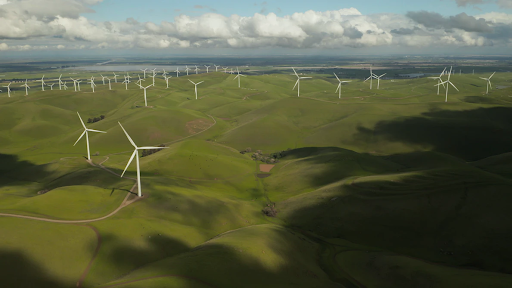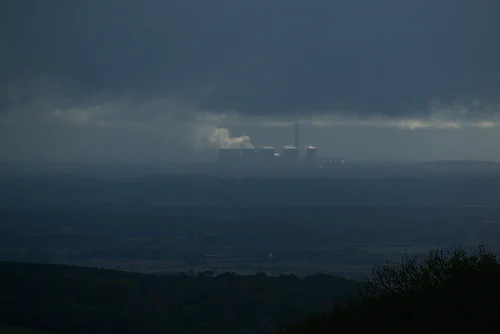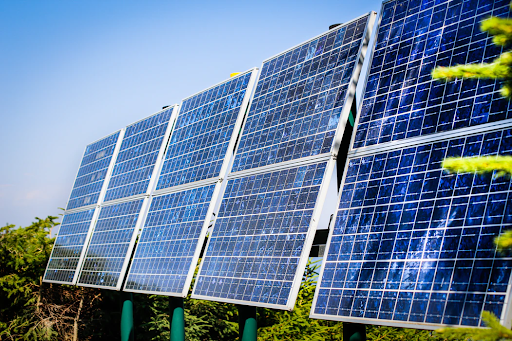CO2 emissions come from both natural and anthropogenic sources. Decomposition, ocean discharge, and respiration are examples of natural sources. Human causes include cement manufacture, deforestation, and fossil fuels such as coal, oil, and natural gas.
Carbon dioxide levels in the atmosphere have risen dramatically due to human activity during the Industrial Revolution, reaching hazardous levels not seen in the past 3 million years. Although human-caused carbon dioxide emissions are substantially lower than natural emissions, they have broken the natural equilibrium that prevailed for thousands of years before human intervention.

Natural sinks take roughly the same amount of carbon dioxide from the atmosphere as natural sources create.
This maintained carbon dioxide levels in check and within a healthy range. However, human-caused emissions have disturbed the natural equilibrium by adding more carbon dioxide to the atmosphere while removing none.
Human Sources of Carbon Dioxide Emissions
It has increased since the Industrial Revolution. The primary source of rising carbon dioxide concentrations in the atmosphere are human activity, such as the combustion of oil, coal, and gas, and deforestation.
The combustion of fossil fuels such as coal, natural gas, and oil accounts for 87 percent of all human-produced carbon dioxide emissions. The remaining is forest clearing and other land-use changes (9%) and some industrial operations such as cement manufacture (4 percent ).
Combustion and usage of fossil fuels
The primary source of carbon dioxide emissions is fossil fuels. It accounts for 87 percent of all human carbon dioxide emissions. When these fuels are burned, energy is released, most typically converted into heat, electricity, or transportation power. As a result, they are utilized in various applications, including power plants, automobiles, airplanes, and industrial buildings. In 2011, the usage of fossil fuels resulted in 33.2 billion tonnes of CO2 emissions globally.
The three most common forms of fossil fuels are coal, natural gas, and oil. Coal accounts for 43 percent of carbon dioxide emissions from fuel burning, whereas oil accounts for 36 percent and natural gas account for 20 percent.
Coal is the most carbon-dioxide-intense fossil fuel. Approximately 2.5 tonnes of CO2e are created for every tonne of coal burnt. 6 Coal emits the most carbon dioxide of any fossil fuel. Because of this and its widespread usage, coal is the most significant source of carbon dioxide emissions from fossil fuels. Coal accounts for one-third of the world’s total primary energy supply yet account for 43 percent of carbon dioxide emissions from fossil fuel consumption.

Anything utilizing fossil fuels comes with a carbon dioxide emission ticket. For example, burning these fuels produces energy, but it also produces carbon dioxide as a byproduct. It is because practically all of the carbon contained in fossil fuels is converted to carbon dioxide throughout this process.
Electricity/heat, transportation, and industry are the three major economic sectors that rely on fossil fuels. In 2010, the leading two sectors, electricity/heat, and transportation accounted for roughly two-thirds of worldwide CO2 emissions.
The sector of electricity and heating
Electricity and heat-generating are the economic sectors that emit the most artificial carbon dioxide emissions. In 2010, this sector accounted for 41% of all carbon dioxide emissions from fossil fuels. This industry relies mainly on coal, the most carbon-intensive fossil fuel, which explains the industry’s massive carbon footprint.
Almost all developed countries derive the majority of their power from burning fossil fuels (around 60-90 percent ). Only Canada and France are exempt. Depending on your local power company’s energy mix, you may discover that the electricity you consume at home and work significantly influences greenhouse gas emissions.

Carbon is a necessary ingredient for all life on Earth. Carbon is found in the fats and carbs we eat and the molecules that make up our bodies, such as DNA and protein. Carbon, in the form of CO2, is even present in the air we breathe. It is also found in the seas, rocks, fossil fuels, and plants.
The carbon cycle depicts the movement of carbon between these locations. Carbon, for example, constantly moves in and out of the atmosphere, as do living things. For example, plants take carbon dioxide from the atmosphere when they photosynthesize. When plants die, their carbon enters the soil, where bacteria may decompose it and release it into the atmosphere.
Forests are often carbon sinks, absorbing more carbon than they emit. Through the process of photosynthesis, they continuously remove carbon from the atmosphere. The seas are another example of a carbon sink, absorbing a significant quantity of CO2 from the atmosphere.
Some processes emit more CO2 into the atmosphere than they absorb. Any process that requires fossil fuels, such as burning coal to generate electricity, emits a significant amount of carbon into the atmosphere. Cattle farming emits a significant amount of CO2 into the environment. Carbon sources are the processes that emit carbon into the atmosphere.
Ideally, the carbon cycle would maintain Earth’s carbon concentrations in balance by transporting carbon from one location to another and keeping atmospheric carbon dioxide levels constant. On the other hand, the carbon cycle is altering as a result of human activity. For example, people are adding more carbon to the atmosphere by burning fossil fuels and raising big animal herds in addition; deforestation is reducing the Earth’s carbon sinks. As a result, the concentration of carbon in the atmosphere is increasing.
Forests (such as Alaska’s Tongass National Forest) absorb more carbon than they emit due to their abundance of plants. Thus, through the process of photosynthesis, they continuously remove carbon from the atmosphere.
To learn more about carbon sources and sinks and how you can help the Earth lessen the carbon emitted from different factories, talk to Daniel Roberts Newcastle today.
